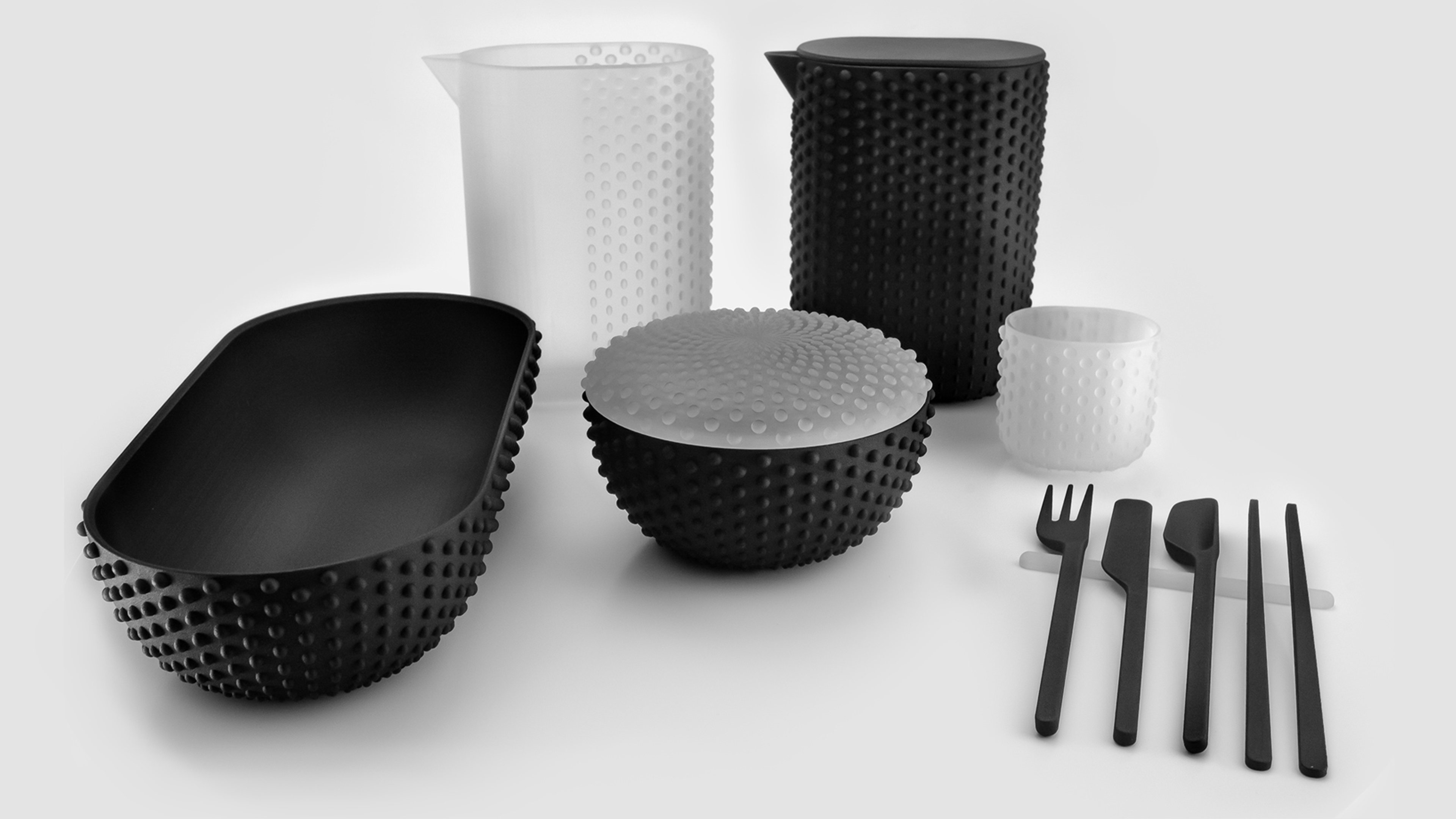According to the United Nations World Population report, the current global population is due to increase by 1 billion people in the next 15 years–an estimated rate of 83 million people per year. With those staggering figures comes a set of inevitable stressors: finite resources and finite space, not to mention a global food and waste crisis that will need to be addressed. How, where, and what we eat says a lot about society today, and the dining tables of the near future, an installation at the Cooper Hewitt, Smithsonian Design Museum suggests, will necessarily be shaped by these stark realities.
As part of the current exhibition Tablescapes: Designs for Dining (on now through April 14), product designer Joe Doucet, fashion designer Mary Ping, and architecture firm Bureau V teamed up to imagine a dining room shaped by mid-21st century concerns. What might a tablescape in the year 2045 look like, you ask? According to the groovy vision crafted by interdisciplinary trio, the future looks a bit amoeba-like, very compact and versatile, and circular–in all senses of the word.
“The table’s design celebrates the contemporary informality of dining, which we see as a vital aspect to a possible future of global food culture,” says Bureau V partner Stella Lee, who collaborated with Ping to create a concentric, shape-shifting furniture concept with Ping. “It’s a system more than an artifact. Its rotational, decentralized, and expandable nature creates ad hoc spatial, material, and social patterns.”

Made with a series of interconnected, swiveling surfaces and stools that can tuck away or fold out to flexibly accommodate a solo diner or a party of up to nine when needed, it’s a genius design for small spaces–but, importantly, it implements a circular model of closed-loop manufacturing that aims to eliminate waste.
In place of luxurious, natural marble or granite surfaces that are now common to domestic spaces, Ping and Lee use composite boards from The ReWall Company, an upcycling manufacturer that compresses food packaging waste to form colorful, pointillist surfaces–in this case, the elegant green-and-white speckle comes from discarded coconut water containers sourced from Starbucks. Artfully curated by color, the overall effect is subtle and pleasingly on trend with the recent terrazzo craze.

“These multifunctional items allow for maximum flexibility, as the lids can be used as plates and trivets. Even the raised pattern serves to spread heat evenly during cooking, but also quickly dissipate it during serving and eating,” he says. “By creating hybrid vessels that act as cooking, serving, and storage for food, we eliminate the need to use separate items for each step and avoid wasting potable water to clean each item between uses.”

The range of cutlery, which includes chopsticks in addition to the standard spoon, fork, and knife, reflect the growth of cross-cultural cuisine in a globalized society, and can be made to scale and orientation for both right- and left-handed users. In all cases, the 3D-printed wares are designed to be “made only when required,” Doucet says.
The future of dining, then, adds up to smaller eating quarters, fewer but more customizable products, and an on-demand manufacturing process that repurposes materials with sustainability at top of mind. Add to that scenario an Impossible Burger or two, and our fears of a radically dystopian future start to look like a more livable reality.
In the face of mass-produced goods that prioritize profit over the health of our environment, independent designers like Doucet, Ping, and Bureau V are increasingly turning their attention to envisioning a more sustainable way of life. As Ping asserts, “Good and thoroughly considered design solutions are the best foot forward to addressing current problems. As more and more emphasis is placed on the circular practices of renew and reuse, we’re proposing something more metaphorically ‘spherical,’ where the path is 360 degrees instead of 180, and all things can be reimagined.”
Recognize your brand’s excellence by applying to this year’s Brands That Matter Awards before the final deadline, June 7.
Sign up for Brands That Matter notifications here.
